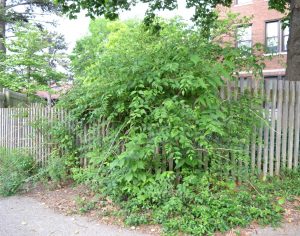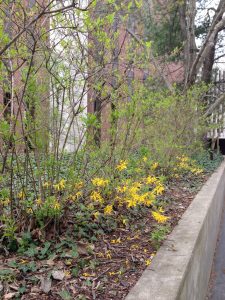Q: I have a trumpet creeper that is more than 5 years old. It is planted at the front of our house which faces east. The vine grows rather hardy but never enormous, as the material I’ve read about this vine indicates. I am wondering whether to move it or just destroy it. Since I’ve researched it and learned that it can be very invasive, I’m wondering if I should just get rid of it. – M.S., Huntington, Indiana
A: Well, that’s an individual choice, but trumpet creeper is usually pretty aggressive once it is established, spreading vegetatively as well as by seed. It is native to much of the US, but still considered an invasive weed when it is growing where it is not wanted. More about this plant at https://plants.sc.egov.usda.gov/home/plantProfile?symbol=CARA2 and https://plants.sc.egov.usda.gov/DocumentLibrary/plantguide/pdf/pg_cara2.pdf.
Q: I have numerous spring bulbs – tulips, daffodils, grape hyacinths, etc. Over the years, as I’ve rearranged my plantings, these bulbs are appearing where I don’t want them. The problem is that once they are no longer visible, I don’t know where the places are that I want to regroup the bulbs, and I don’t know their colors. Will they bloom and be healthy if I move them before they’ve bloomed, or just after they’ve bloomed so I can see where the other clumps are that I want to add these stray bulbs to? M.S., Huntington, Indiana
A: Ideally, you would move the bulbs once the foliage has died back and they are fully dormant. You could use plant tags or flags to mark them while they are in bloom to keep them organized as you wish. But if you do try to move them before they fade, you’ll want to try and dig deep and wide and enough to get as much of the roots as possible and replant immediately so they don’t dry out.
Q: I have a forsythia shrub that I planted nearly 7 years ago. It has stopped blooming now the last two years. What do you think could be wrong with it? I am 81 years old enjoying my blooming flowers I planted all myself. – R.C., Madison, Indiana
A: Because forsythia produce their flower buds on last year’s growth at the end of summer, the flower buds can be killed by severe low temperatures. It is not unusual to see forsythia plants that have a skirt of blooms at the bottom of the plant but none on the upper stems. I would not have expected a lot of winter-killed flower buds on forsythia this year. But, another possibility is that they were pruned at the wrong time of year. Gardeners sometimes unknowingly remove the flower buds by pruning between midsummer and early spring. The best time to prune forsythia is immediately after the blooms fade in spring.

